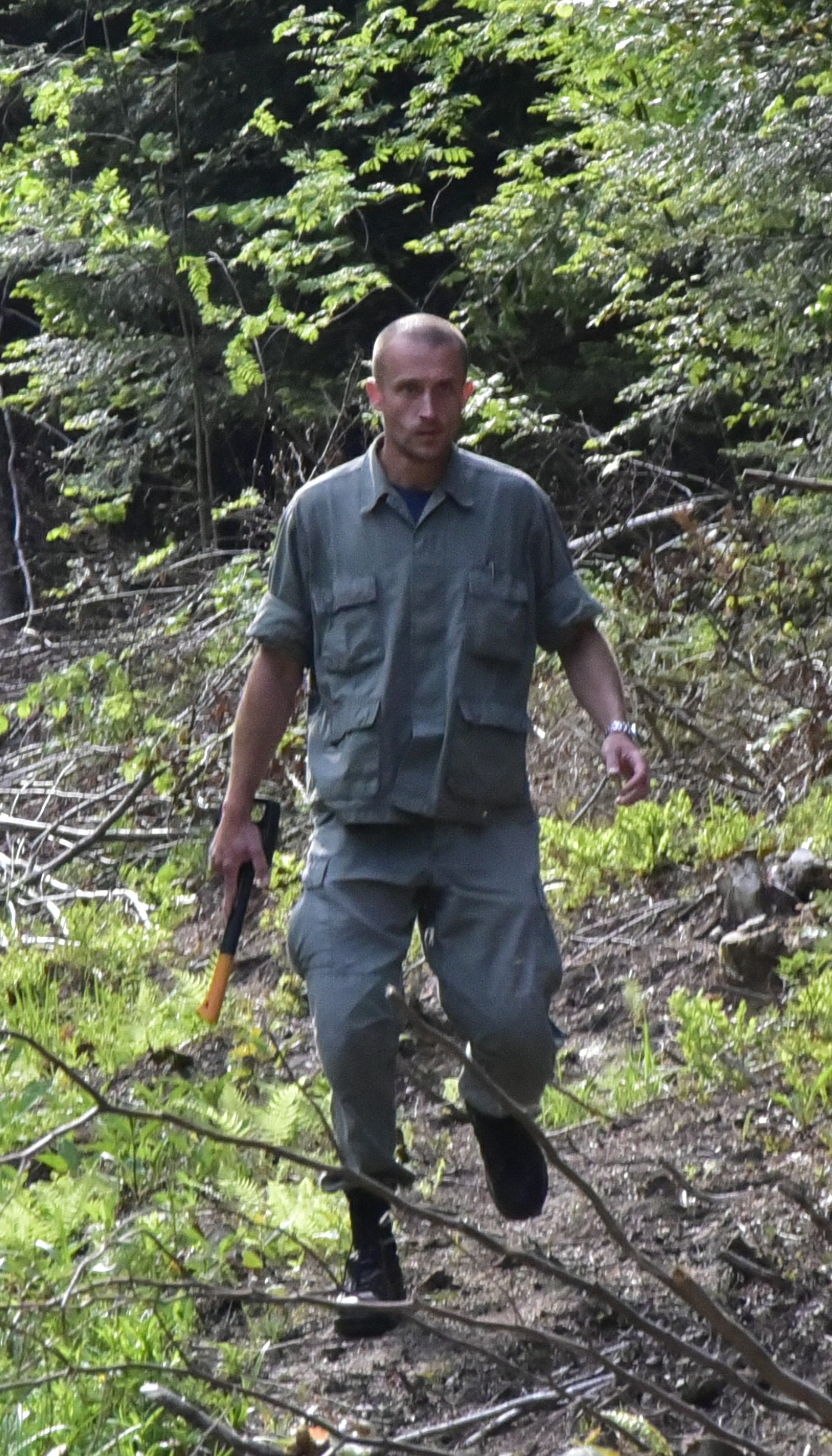Forest entomology
ŠP4004 - obavezni
Opterećenje: 30(P) + 0(L) + 30(A) + 0(PK) + 0(S) + 0(TJ) + 0(SJ) + 24(T)
Sadržaj predmeta: LECTURES:
1. The history of forestry entomology in Croatia, the meaning and purpose of the course "Forestry entomology", foreign and domestic examples of the dramatic impact of insects on forestry and the forest, connection with the teaching material of the course in higher years of study (2 hours).
2. Taxonomy of insects with an overview of orders and their basic morphological features. Insect morphology, basic parts of the body, skeletal structure and competitive advantages and limitations resulting from it (2 hours).
3. Insect anatomy, insect physiology, blood system, respiration, nutrition physiology and types, the importance of knowing how to eat in protecting forests from pests, regenerative and supplementary nutrition, reproduction, gamogenesis, parthenogenesis, polygamy, polygyny, appearance of sexes in time and space (2 hours).
4. Growth and ontogenetic development in insects, developmental stages, types of larvae, types of pupae, physiology of molting, apolysis, eclosion, ecdysis, hormonal system, endocrine glands (2 hours).
5. Senses of touch, sight, hearing, smell and taste in insects, communication with the environment, semiochemicals, intraspecific and interspecific communication, sexual and aggregation attractants, examples (2 hours).
6. Fundamental adaptations of insects to habitat conditions, influence of temperature, moisture and light on insect development, circadian rhythm, diapause, heterotypic relationships between insect species, predation, parasitism, examples (2 hours).
7. Fundamentals of insect population ecology, quantitative indicators and distribution of insect populations, fluctuations, oscillations, gradations, gradation types with examples (2 hours).
8. The most important forest species from the orders Orthoptera, Thysanoptera and Hemiptera. Bionomy, ecology and importance of selected species (2 hours).
9. The most important forest species of beetles from the families Cicindelidae, Carabidae, Anobiidae, Buprestidae and Cerambycidae. Bionomics, ecology of selected species and their impact on the forest ecosystem.
10. The most important forest species of beetles from the families Chrysomelidae, Coccinelidae, Elateridae, Staphylinidae, Scarabaeidae and Curculionidae. Bionomy, ecology of selected species and their impact on the forest ecosystem (2 hours).
11. The most important forest species of beetles from the Scolytidae family. The concept of "primary" and "secondary" pest in forestry and forest entomology, general biological features of the bark beetle and the bark beetle, physiological and technical pest. Bionomy, ecology of selected species and their impact on the forest ecosystem (2 hours).
12. The most important forest species of hymenoptera wasps from the families Siricidae, Diprionidae, Tenthredinidae and parasitic wasps of the suborder Apocrita. Bionomics, ecology of selected species and their impact on the forest ecosystem. Special adaptations of parasitic wasps and their role in reducing the number of populations of harmful insects (2 hours).
13. The most important forest species of leaf miner butterflies from the families Tischeridae, Lithocolletidae, Yponomeutidae, Argyresthiidae. Xylophagous Lepidoptera; Cossidae and Sessidae. Families Lymantridae, Tortricidae, Pyralidae. Bionomy, ecology of selected species and their impact on the forest ecosystem (2 hours).
14. The most important forest species of butterflies from the families Geometridae, Lasiocampidae, Thaumetopoeidae, Notodontidae, Noctuidae. Bionomy, ecology of selected species and their impact on the forest ecosystem (2 hours).
15. The most important forest species from the Diptera order. Families Tipulidae, Cecidomyidae, Asilidae, Syrphidae, Tachinidae. Basic principles and features of parasitic Diptera. Bionomy, ecology of selected species and their impact on the forest ecosystem (2 hours).
EXERCISES:
1. Familiarization with the method of operation and the necessary accessories. The basic structure plan of an insect. Simple dissection of softened preparations of the common mullet (Melolontha melolontha) and drawing of the basic parts of the body: head, thorax, rump (2 hours).
2. Locomotor organs in insects: legs and wings. Detachment of legs and wings in beetles and hymenoptera and familiarization with the basic parts. Drawing individual parts of the leg and special wing shapes (covert, half-covert and petioles) (2 hours).
3. Mouth structure in insects and basic types. Dissection of the mouthparts of grasshoppers and grasshoppers. Observing even and odd parts of the oral system and their articulation. Drawing of separated basic parts and schematic drawings of four types of oral structure (2 hours).
4. Senses in insects. Drawing of the tympanal auditory organ, the stridulation organ of the jackdaw, the compound eye of a dragonfly and different forms of tentacles (filamentous, comb-like, leaflet-like, sneeze-like, knee-squeeze-like). Drawing parts of the tentacles of the conifer rhagium inquisitor (Rhagium inquisitor) (2 hours).
5. Dissection of an insect: digestive system, nervous system, sexual organs. Drawing basic parts digested. Drawing microscopic preparations from the bodies of diseased insects: bacteria, microsporidia, gregarines, nematodes (2 hours).
6. Getting to know the technique of entomological dissection. Technique of taxidermy of beetles (Chrysomela populi) and butterflies (Lymantria dispar). Carrying out dissection and sketching the procedure (2 hours).
7. Technique of preparing small beetles by sticking them on cardboard (Ips typographus, Pytiogenes chalcographus). Technique of preparation of Vespa (Vespa spp.). Carrying out dissection and sketching the procedure (2 hours).
8. Developmental stages in insects. Wet preparations of the basic types of larvae and pupae and specimens of live caterpillars or caterpillars available in nature. Drawing of basic types with emphasis on key morphological details (2 hours).
9. Predators and parasitoids. Drawing of a typical forest predatory species (shrike, swift), wasp (Torymus spp.) and caterpillar fly (cocoon and imago). Drawing of parasitized and normally hatched eggs from the egg litter of the pine beetle and gorse, drawing of hatched egg parasites (2 hours).
10. Representatives of the order Heteroptera, Homoptera and Thysanoptera: drawings of a dry preparation of a fire bug and a wet preparation of a beech aphid and a viburnum weevil (projection on a multimedia projector). Drawings of the green pine eared pinecone and the ash eared pinecone (2 hours).
11. Representatives of the Hymenoptera order. Drawings of caterpillars of some of the species available at the time of the exercise, drawing of images of the large wood wasp, the brown pine saw wasp and the oak leaf wasp. Drawing of a large forest ant and a hornet (2 hours).
12. Representatives of the Lepidoptera order. Drawings of caterpillars of some of the available species at the time of the exercise, drawing of the imago of a female and a male of the gopher, a female and a male of a small frost moth, a goldfinches and a cocoon of a pine needle moth (2 hours).
13. Representatives of the Coleoptera order. Drawings of live larvae of goldfish, mantis and squilidret. Drawings of the great oak squilidreta, the long-horned dogwood and the ant beetle. Drawings of the corridor system of krasnik and ring oaks (2 hours).
14. Crustaceans. Drawings of the basic types of corridor systems in bark beetles: one-armed and two-armed horizontal, one-armed and two-armed vertical, multi-armed horizontal, multi-armed vertical, star-shaped, shallow-shaped, ladder-shaped. Observing and distinguishing maternal from larval parts of the corridor system (2 hours).
15. Representatives of the Diptera order. Drawings of hairy fly (Bibio sp.), wasp fly and willow and beech cone fly (2 hours).
FIELD TEACHING: (3 days)
In the field, students get to know live examples of harmful and beneficial forest insects, their impact on the forest ecosystem and the consequences they cause. Examples from the continental lowland area, mountainous Croatia and the sub-Mediterranean and Mediterranean areas are discussed.
Literatura: Obavezna literatura:
1. Hrašovec-Franjević, 2020: Šumarska entomologija -posebni dio -pregled najznačajnijih vrsta šumskih kukaca i njihova osnovna biološka obilježja.
2. Hrašovec, B. 2004: Kukci – važni pokazatelji bioraznolikosti ali i povremeni uzročnici kalamiteta u šumskom ekosustavu. Hrvatsko šumarsko društvo, Zagreb, 76 str.
3. Hrašovec, Franjević, 2020: Šumarska entomologija -opća entomologija – unutarnja i vanjska građa kukaca, fiziologija, opća ekologija i biologija
Preporučena literatura:
5. Tomiczek, C., D. Diminić, T. Cech, B. Hrašovec, H. Krehan, M. Pernek, B. Perny, 2008: Bolesti i štetnici urbanog drveća. Udžbenici Sveučilišta u Zagrebu, Šumarski institut, Jastrebarsko – Šumarski fakultet Sveučilišta u Zagrebu, Zagreb, 382 str.
6. Zúbrik, M., Kunca, A., Csóka, G., Forster, B., Hâruţa, O., Hoch, G., Hrašovec, B., Koltay, A., Kulfan, J., Leontovyč, R., Nageleisen, L.M., Nakládal, O., Novotný, J., Roques, A., Peńa, G.S., Šrůtka, P., Stergulc, F., Sukovata, L., Tomiczek, Ch., Turčáni, M., Vakula, J., Wermelinger, B., 2013: Insects and diseases damaging trees and shrubs of Europe. N.A.P. Editions, ISBN 978-2-913688-18-6, 535 p.
7. Chapman, R.F., 1998: The Insects – Structure & Function. Cambridge University Press, Cambridge, 770 str.
Nositelji
Prof.
Boris Hrašovec PhD
Distinguished professor
Email: bhrasovec[at]sumfak.unizg.hr
more
Suradnici
assoc. prof.
Milivoj Franjević PhD
associate professor
Email: milivoj.franjevic[at]sumfak.unizg.hr
more






